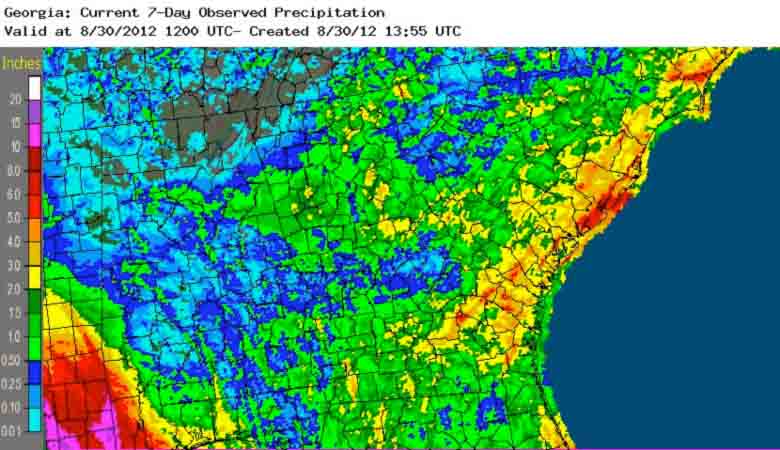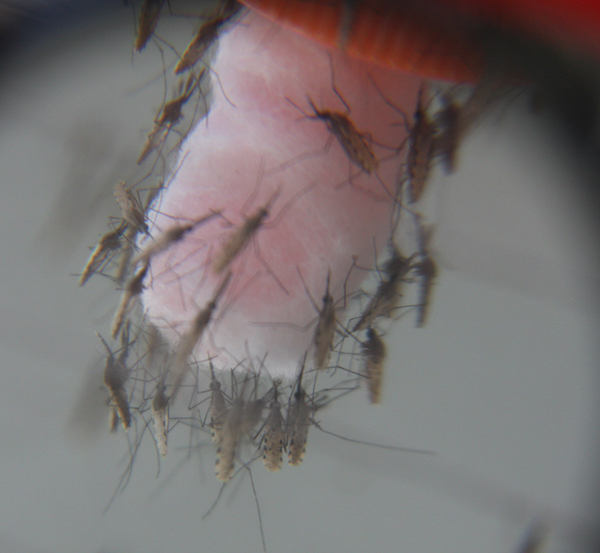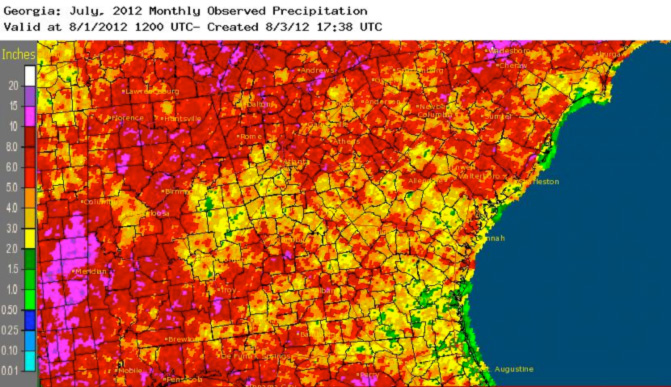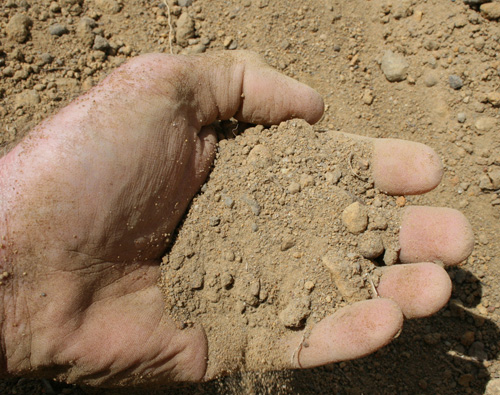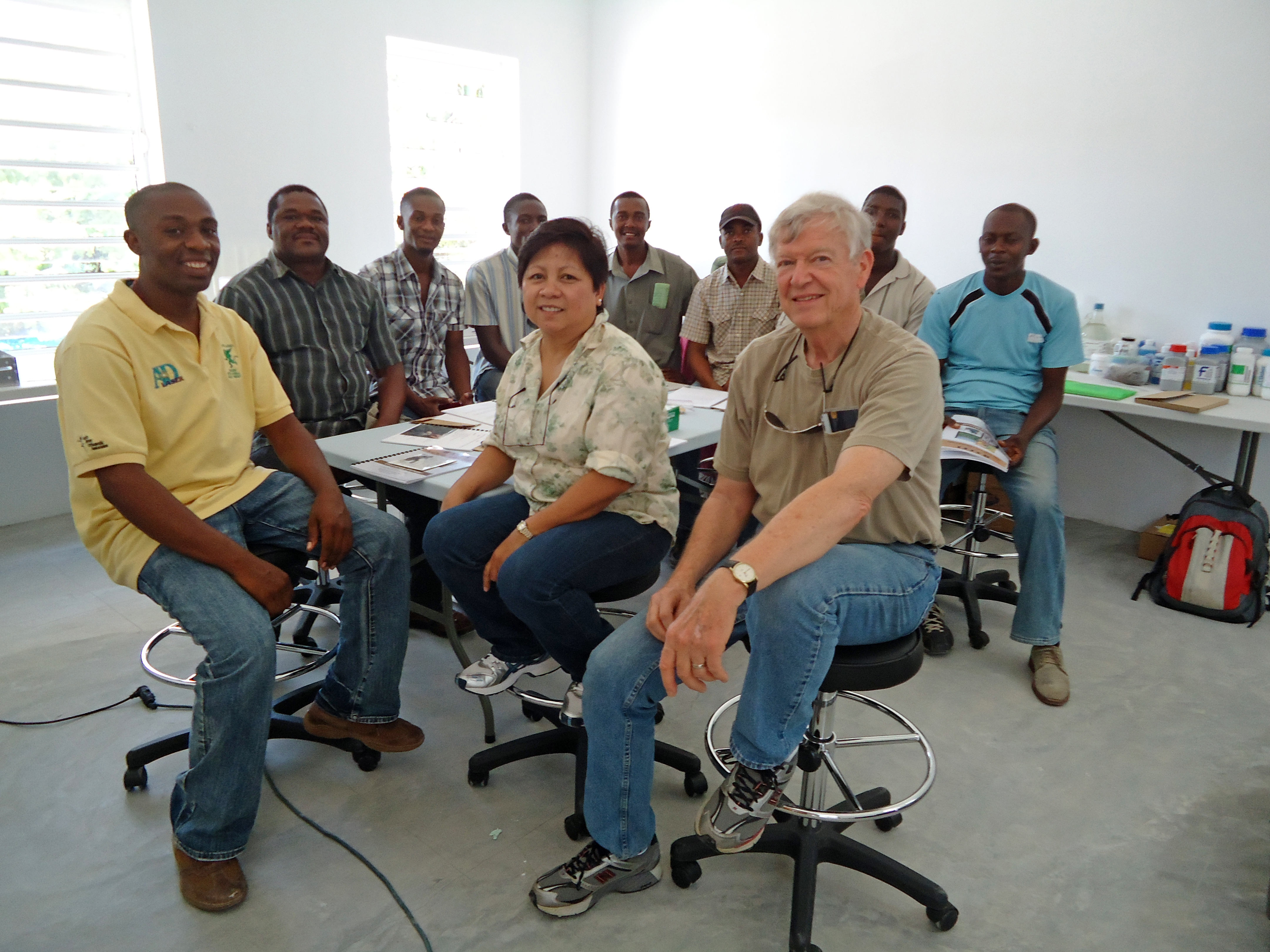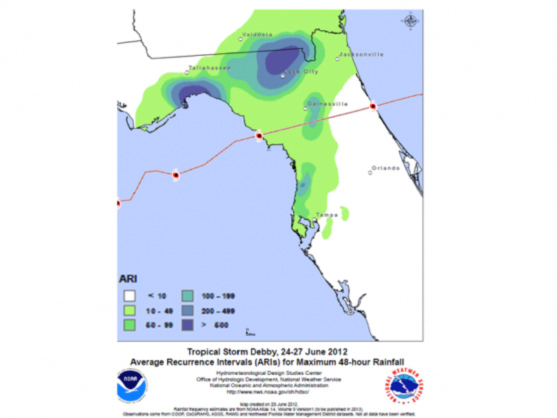August Rain
August in Georgia was cooler than average across the state, but rainfall varied considerably from northwest to southeast. Generally the driest area was the metro Atlanta area, and the wettest areas stretched from south of Augusta and east towards the Georgia coast.

